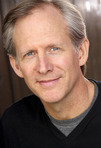Ian Bull's Blog, page 7
May 11, 2013
California Artist : The Amazing Gregangelo
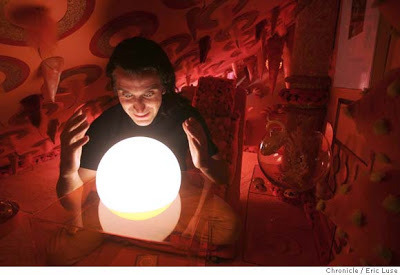
I grew up in San Francisco in Diamond Heights, and when we moved into our brand new Hayman Home in the 1970’s, the Herrera family was just two doors down. We were from Canada and had been in the United States less than two years, while the Herrera family was of Lebanese and Mexican descent and had been in California for three generations. There were enough kids who matched up against us age-wise that we all became friends and we have been ever since. The Herrera kids grew up to be filmmakers, scholars, teachers, and musicians, but Greg, the middle kid, grew up to be a professional whirling dervish. At a young age, in the street and on the playground, Greg would spin. He could turn and turn and turn and not get dizzy, leaving any challenger who went up against him on their hands and knees in the dirt. No kid on the block could do more than twenty spins without falling down, but Greg would then spin on for twenty minutes. With no worthy adversary he’d spin alone, entering a trance state to break his own personal record again and again. Most people eventually set aside childish things, but San Francisco is one place where it’s neither required nor recommended. You can call yourself a stilt walker, or a juggler, a clown, an acrobat, painter, sculptor, a nun drag queen or a pro downhill skateboarder and no one will bat an eye. In fact, if you’re good enough they’ll probably name a day after you. That’s how it’s been in San Francisco from the beginning. The Outlands were defined as the territories west of the Mississippi, and that’s where outlandish behavior was tolerated. Keep moving west and you’d reach the city where your outlandish behavior was actually celebrated. Emperor Norton was an English eccentric turned San Francisco resident in the 1860’s who called himself the Emperor of the World and the Protector of Mexico. He’d mount parades around the city, which he’d lead in full military uniform, and people loved him for it. Besides abolishing Congress (people didn’t obey him) he declared that the two bridges spanning the San Francisco Bay should be built (which people obeyed) and 30,000 people came to his funeral. So, when you’re growing up in San Francisco and people ask what you plan to do for a living, you have a wider choice of careers. Some kids might dream, “I’m good at basketball, maybe I could play in the NBA.” Greg dreamed differently. He was good at spinning, and figured he could be a professional spinner.
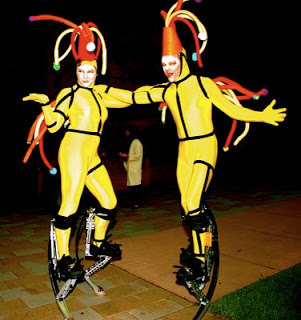
When you have a passion, you still work -- you just don’t call it that. Greg studied theater and dance and business. I remember being in a nightclub and Greg arrived wearing a paper painter’s button up jumpsuit that was splattered, Jackson Pollock style, with vivid florescent colors that lit up when he was on the dance floor. “Cool jumpsuit!” people would say. “Where’d you get it?” “I made it! Want to buy it?” he’d answer. He’d open his backpack and sell twenty paper painter suits for 20 bucks each, and then disappear. Great artist, great presentation, great businessman. He paid five bucks for the jumpsuit, five bucks for the paint and made 100% profit on every jump suit he made, and he made dozens of them in an afternoon and sold them in clubs every weekend. Greg turned his spinning talent into an act -- Gregangelo, the Amazing Whirling Dervish. Imagine spinning to music in multiple costumes with electric lights. It’s mesmerizing. Other artists noticed that Greg was booking more gigs and making a better living than they were, so they asked him if he’d manage them. It was an unwieldy and eclectic group, more like a circus than a business... ...so Greg turned it into Velocity Circus, which now performs 200 days a year. He mounts performances at San Francisco’s City Hall, for the San Francisco Opera and often hired to promote exhibits at the DeYoung Museum.
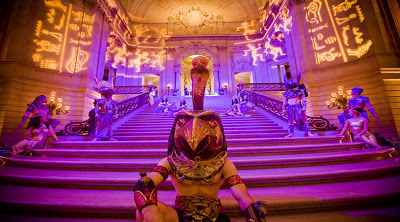
The kid down the street who wouldn’t stop spinning is now The Amazing Gregangelo, an Electric Whirling Dervish, Master of Ceremonies and leader of Velocity Circus, a real life Willy Wonka with a labyrinth in his home. His life is his art is his life, so why not turn your home into something worthy of a creative dervish?
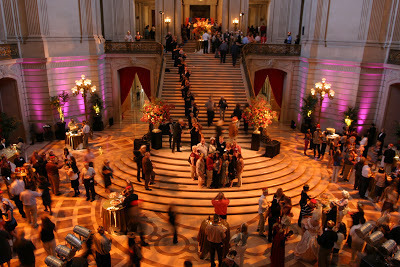
I tried to turn him into a reality show awhile back and did a sizzle reel, the link is below. If you ever get a chance to see him or his home, I highly recommend it.
Velocity Circus Sizzle Reel
The Bold Italic : Gregangelo
gregangelo.com
gregangelo.com: video
youtube.com : gregangelo
Published on May 11, 2013 11:30
May 8, 2013
Dark Los Angeles: Talking with Trevor
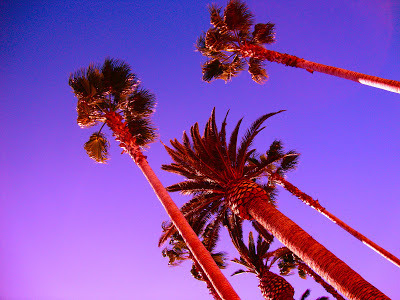
This is a real conversation I had, with changes only made to protect identities. It is a conversation that could happen in no other city in the world besides Los Angeles.
I’ve just finished oral surgery at my dentist near Cedars Sinai hospital and my headache and nausea are bad enough that I don’t want to go home where only work and phone calls await.
Instead, I go to the Farmers Market where I can have lunch and wander until my sense of self returns.
As I cross the open-air parking lot, I see Trevor Hammond, a British screenwriter who once taught a night summer screenwriting class that I took when I first came to Los Angeles. He’s standing in the shade of the first building, smoking a cigarette. We spot each other and smile.
I loved his class because he’d take us students drinking afterwards and entertained us with amazing stories of his life growing up in East London and his work as a writer in Hollywood.
Trevor is talented -- he’s written movies and TV shows you would recognize -- but he has enough demons that he’s sabotaged his own success, mostly with drugs and that gets him fired for tardy work or bad behavior.
Yet he’s always funny and friendly and gracious and open whenever I see him, which happens randomly about once a year, in stores, theater lobbies, and at screenings.
“Hello, Professor Hammond,” I say.
“Mr. Bull,” he answers. “Always good to see you again.”
His second-hand smoke hits my nostrils and churns my head and my stomach, and it also must turn my face green because he drops his cigarette and steps on it.
“You look pickled, Squire,” he says.
“I just had my mouth worked on.”
“You just do the Novocain and laughing gas? Or did they give you the Michael Jackson joy juice?”
“I didn’t know you could do that for oral surgery.”
“Of course you can. We’re in Los Angeles. You just have to sign the forms and pay for the anesthesiologist. I’ll e-mail you my dentist’s name.”
“When did you start smoking again? I thought you quit three years ago.”
“I always find a reason to start again. My first draft, my second draft, the Oscars were on, and I’m seeing you again.”
“Thanks, Trevor.”
“I smoke to celebrate, too. Any excuse will do. Besides, my doctors all smoke and I’ve never met healthier, happier people.”
“You have doctors who smoke? What kind of doctors are they?”
“They’re not really doctors, they’re more like healers. Medicine men.”
“Do they have a clinic?”
“No, they’re constantly moving through the West, going state to state, and whenever they loop back through town I get in touch with them and I go through a healing ceremony with them.”
“A healing ceremony?” I ask.
“I take DMT with them. It’s a mind-expanding vision-inducing chemical.”
“DMT?” I ask. “You mean LSD?”
“No, it’s DMT. It cleanses both your mind and your body. I compare the experience to a loving psychiatrist who shows you all your flaws, and who then water boards you. It’s blows your mind, mate.”
“Water boarding doesn’t sound fun,” I answer.
“Hey, whatever works to get the gunk out. Most of the time I take a gentler version of the medicine that lasts about two hours. It comes from combining this flower and this root that comes from the Amazon rain forest. They make a brew of it that you drink, called Ayahuasca. Everyone’s doing it.”
“Never heard of it. How do you spell it?” I ask, pulling out my iPhone. I touch the notepad app and start typing in the letters as he dictates:
“A..y...a...h...u...
I’m waiting for the spell check on my iPhone to mangle this into something indecipherable. If you type in “I’m in the Marina,” it will turn it into “I am inanimate,” so I know it can’t handle a word for an obscure chemical stew from the Amazonian jungle.
I’m amazed when the notepad app accepts the word without a suggested change.
“That’s weird,” I say.
“What?” Trevor asks.
“I thought for sure my iPhone would turn Ayahuasca into Ayurvedic or some other word, but it went in with no problem.”
“That’s not an accident, my friend. That’s on purpose. That’s an inside joke between all the IOS designers at Apple. All those guys in Silicon Valley are taking it. That’s their little way of telling the world what they’re up to -- if you’re in the know.”
“Sure thing, Trevor.”
“You doubt? All the software designers in Silicon Valley are taking it. I’ve experienced it first hand.”
“Really? You’re hanging out with software engineers now?”
“No, but I’ve taken Ayahuasca with them. I was on an Ayahuasca retreat in Peru, where travel by river to this compound in the jungle with thatched huts and wooden walkways between them, like the Ewok village in Return of the Jedi. Do you remember that?”
“I remember the Ewok village, yes,” I answer.
“Well I was on this two week retreat in Peru where we take Ayahuasca every two days, and over half the people on that trip were from Silicon Valley. Swear to God.”
“Good story, Trevor,” I say, waving my hand. “That’s why I love talking to you.”
“Story? Always the Doubting Thomas. It’s all true. And you know who the other half of the trip was? Computer animators.”
“Interesting,” I answer.
“Believe what you want, but when you go to see a movie about talking cars, cute little robots, fighting pandas, or moms who turn into bears, just remember where they’re getting their ideas.”
He nods at me, smiles and holds up another cigarette.
“You feel well enough yet for me to smoke?” he says, and lights up before I can answer.
It’s a clean and sunny day, but its still winter, and when the breeze comes it’s suddenly too cold for me in the shade. I want to be in the warm sun again.
“Enjoy your medicine men, Professor,” I say, and I walk back into the sunny parking lot back to my car.
Published on May 08, 2013 17:35
May 4, 2013
California Life : How I Got to California
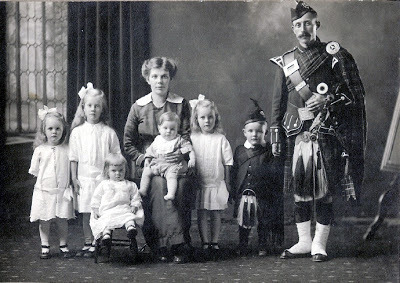
Like many Americans and Californians my family came from somewhere else. This is a photograph from 1916 of my great grandfather Norman MacDonald and my great grandmother Murdina MacDonald, shortly after they immigrated from the Isle of Lewis off the coast of Scotland to Ontario, Canada.
They moved from the Isle of Lewis because the one patch of land he farmed could not feed a family. Newly arrived in Canada, they took this family portrait with their children in their best clothes: Mary, my grandmother, the oldest daughter - Annabelle, the second - Dina (short for Murdina), the third daughter - Donald, the first-born son, full name Donald MacDonald (poor kid) - Norman, the second son - Baby Peggy, who would soon die in the influenza epidemic of 1918 And still yet to be born: Angus, who was in the Canadian Navy in World War II and swam away from three warships sunk by Japanese torpedoes - Murdo, who was in the Canadian Royal Air force and who rode in the “death seat” as the rear gunner in a slow moving bomber, flying raids over Europe. He was shot down and killed on his 26th mission. Ruth - the ninth child, also on the West Coast now, but in Vancouver Canada. My grandparents endured poverty, a long trek across an ocean, the death of two children, and a difficult life on a new continent. Yet you can see their strength and pride in this photograph, and when things are tough for me I am reminded of the good stock from which I come and that I have it easy compared to them. My mother and father both grew up in Thunder Bay, Canada, but my mother fell in love with California when she worked in Santa Barbara for two years as a traveling nurse. When she stepped off the train in January in the 1960s, she saw palm trees framed by mountains with a dusting of snow. Palm trees and snow at the same time? she thought. How was that possible? She was amazed but also felt that she had found home. She returned to Canada where she met my father, and after ten years of marriage and three kids she finally convinced him to move our family to San Francisco, which technically makes me a first generation immigrant to the United Sates, and the second generation in North America. And, like me, for half a century most Californians were from somewhere else, especially in the urban centers - the Bay Area, Los Angeles, Orange County and San Diego. Living in Los Angeles it’s rare to encounter a native Angeleno, and even more rare to find someone whose parents and grandparents are from California. That’s because from 1960 to 2010, the population of California grew 167 percent, which means most everyone or their parents were from somewhere else. We all came here for that particular permutation of the American Dream called the California Dream, and yes, it does exist. Not to disparage any other state, but people just don’t speak of the Carolina or Arkansas or Wisconsin Dream. But the California Dream has taken a hit in the last few years. Since the economic downturn life isn’t as pleasant in California as it has been and more people have left the state than moved here. This has led to other changes. The USC Population Dynamics Research Group has come out with a new study confirming this. For the first time in fifty years, most people who live in California were born in California, and by 2030 two thirds of young adults will have been born here. I’m not sure how I feel about the news. Part of me breathes a sigh of relief. There are enough people here already, thank you. With fewer people coming, we may finally be able to keep up with public needs, like rebuilding infrastructure, and private demands, like more housing. Then again, I’m an immigrant and I know immigrants made California great. What will happen if the dreamers stop coming? I know Silicon Valley worries that if they don’t grab the brightest engineers from around the world they’ll just go somewhere else. But there may be a bigger problem than fewer engineers -- we are facing a future with fewer children. Not only are fewer families are coming to California, but fewer families are starting in California. Read this, from the same 2013 USC Populations Dynamics Research Group Study: The number of children under age 10 living in (Los Angeles) county is projected to drop 15 percent from 2010 to 2020, on top of last decade’s 17-percent loss of children in that age group.
At the same time, baby boomers are reaching retirement age. The proportion of elderly residents in LA is expected to nearly double from 9.7 percent in 2000 to 18.2 percent in 2030, the report projected. You can see where this is going. California is in debt. I am worried about our educational system, our infrastructure, and about climate change. How will we manage? Everything will get worse before it gets better and it will be hard to keep the dream alive. California is facing many struggles and we need some good immigrant stock from around the world. We must find a way to lure smart hardworking people here, and to get them to stay and to raise smart and hardworking future Californians. But how? My mind flips back and forth -- Flip: It’s expensive to live here, and there are easier places to start a business. Taxes are high. We have tough environmental protections and regulations you don’t have to endure in other places. Flop: California is still pristine because of those regulations, and those rules will probably end up being instituted elsewhere eventually. California leads the way, which is why it’s sometimes called a bellwether state. Do we lower taxes? Remove regulations? Provide incentives? Promote immigration? It’s so strange to consider any of this, since California has never needed to do that before. The Dream itself fueled it all. What must change? It leads my mind to one thought I dare not yet discuss in this nascent blog -- Proposition 13. However, I will raise a few questions: You are 60, you own your home and you pay $5000 in property taxes. If you sold your house and moved somewhere else in California, you’d have to pay $20,000 on a new home of comparable worth. Would you ever move? You are 30 and you’ve saved up to buy your first home and you have one child and another on the way. Someone aged 60 is finally selling their home, and you want to buy it so you can renovate it or tear it down and start over. However, that same property will now cost you $20,000 a year in taxes. Do you buy or wait? Or would you want to move to Arizona or Colorado instead? I won’t answer the questions, but I would love to hear your thoughts -- and also tell me how you and your family came to California!
Some interesting links :
USC News : LA is no longer a city of newcomersUSC PopDynamicsManhattan Institute : The Great California Exodus: a closer lookPBS American Family, Journey of Dreams : East LA, Past and Present
Here is a link to an interesting documentary project about the changing Boyle Heights neighborhood of Los Angeles, which epitomizes the changes California has gone and is going through. Click and watch some cool video.
Indiegogo.com : East LA Interchange : a documentary film
Published on May 04, 2013 16:15
May 1, 2013
Stuck in a Doorway
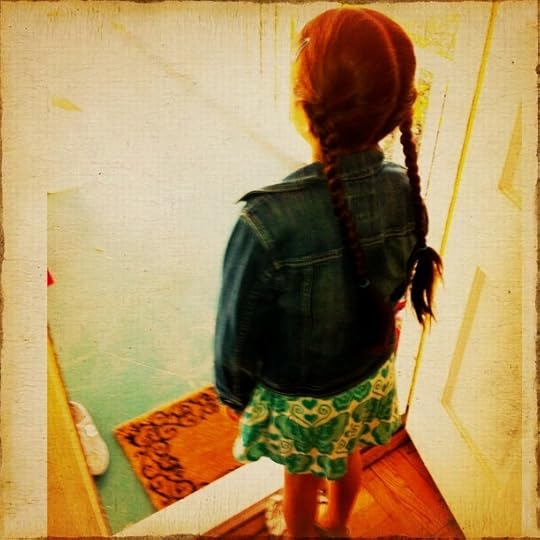
My daughter freezes in doorways. Lily will sprint from the kitchen, accelerate through the dining room howling “Ramming Speed!” as Robin and I leap out of her way, and then come to a dead stop in the open front door. She’ll even tilt on the door jam, rocking on her heels. “Lily, we’re right behind you, just step outside,” we say as we nudge her to keep going. She has no trouble moving anywhere else. Lily will tear down hallways so fast the tailwind she generates flutters the curtains. She needs a perfect tread on her rubber soles otherwise she’ll skid out while rounding a corner at the playground and come home with torn leggings and bloody gashes on her knees. Yet when we’re going to school, to dinner or to dance class she will brake at every passage point she encounters. She stops midway through the car door as she’s climbing in, and then pauses again as she’s getting out. She’ll block doorways to restaurants while diners pile up. She’ll stares at escalators and turnstiles. She doesn’t want to stop, it just happens to her. Something within her forces her to stop and stare at every transition point. This is where everything changes. We’re going outside, and it’s happening - now! The car ride is happening - now. School is starting now. Am I ready? Can I do this? When you’re seven and half, even small changes and transitions are exciting and even overwhelming, and she experiences it more fully. “We’re going to dance class! This is it! It’s happening now!” I envy her, because on the same day she pauses at six different doorways, I get so lost in my thoughts I won’t even remember driving to work. Passages affect all of us, we just don’t experience then as fully as our children do. It’s always when you’re in at the door that you realize you forgot your jacket, book, file, lunch, keys or phone. I will cross the same threshold two or three times before I feel I’m ready to head out into the world. Doorways erase memories and trigger memories too -- if you forget why you walked into a room, walk out and come back in again, and the reason for your trip will return to you. Notre Dame Professor Gabriel Radvansky studies how doorways affect memory. “Entering or exiting through a doorway serves as an ‘event boundary’ in the mind, which separates episodes of activity and files them away,” Radvansky explains. “Recalling the decision or activity that was made in a different room is difficult because it has been compartmentalized.” Some passages are as vivid for me as they are for Lily -- and I’m in one of those doorways now. I have worked in television my entire adult life, but now I’m also writing books, articles, novels, and this blog. As I transition from one career to another, I am already crossing back and forth through the open door --is it happening now? Is this it? Am I ready for this? What am I forgetting? Can I do this? It may go on for years before cross a definite “event boundary.” Plus, TV, movies, books, magazines and books are changing so fast I have no idea where I’m going. But I’m in the doorway now, and I’m feeling the same excitement Lily feels when she stands in our open front door. I’m enjoying this, and I’ll keep you posted as I find my way through!Gabriel Radvanskywas published recently in the Quarterly Journal of Experimental Psychology.
Published on May 01, 2013 07:00

